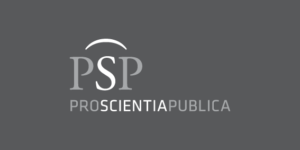Using Musical Activities in Primary School Subjects
DOI:
https://doi.org/10.15503/jecs2025.3.505.516Słowa kluczowe:
musical activities, subjects in grades 1-3, primary school teacher, primary educationAbstrakt
Aim. The study aims to determine the opinions of primary school teachers about the use of musical activities in the subjects taught in grades 1-3 of primary education.
Methods. The study used a quantitative research design and involved 151 (N=151) primary school teachers who completed a questionnaire at five different time points. The study addressed three research questions: RQ1: What types of musical activity could primary school teachers use in other subjects? RQ2: In which subjects could primary school teachers use musical activities? RQ3: At what level can primary school teachers use musical activities in each of the subjects taught in grades 1-3 of primary school? SPSS version 22 was used for statistical data analysis to group the data, observe trends, and establish relationships between variables.
Results. The study revealed that primary school teachers often use musical activities such as listening to music in other subjects but play musical instruments the least. English, sports, and Latvian are the most common subjects where musical activities are used, while design and technology are the least. Although primary school teachers can use musical activities at a high level in several subjects, English is the most highly-rated subject, while the lowest-rated subject is design and technology.
Conclusions. The findings allow us to determine which types of musical activities could be used in grades 1-3 of primary education, in which subjects the teachers most often use musical activities, and at what level primary school teachers evaluate their ability to do that.
Pobrania
Bibliografia
Abella, J. L., Barluado, S. M. T., & Sepada, J. T. (2023). Enhancing children's literacy through music: Exploring the impact and strategies for integration. Excellencia: International Multi-Disciplinary Journal of Education, 1(2), 44-53. https://multijournals.org/index.php/excellencia-imje/article/view/20
ALLEA. (2023). The European code of conduct for research integrity. ALLEA. https://ec.europa.eu/info/funding-tenders/opportunities/docs/2021-2027/horizon/guidance/european-code-of-conduct-for-research-integrity_horizon_en.pdf
Altun, Z. D. (2010). Exploring effective music teaching strategies of primary school teachers. Procedia Social and Behavioral Sciences, 9, 1182–1187. https://doi.org/10.1016/j.sbspro.2010.12.304
Augustine, C., Huey, W., & Wong, C. (2016). Music teaching readiness among non-specialised music teachers in government preschools. Malaysian Music Journal, 5(2), 54-69.
Barrett, M. S., Zhukov, K., Brown, J. E., & Welch, G. F. (2020). Evaluating the impact of a generalist teacher-led music program on early childhood school children’s singing skills and attitudes to music. Psychology of Music, 48(1), 120-136. https://doi.org/10.1177/0305735618790355
Battersby, S. L., & Cave, A. (2014). Preservice classroom teachers’ preconceived attitudes, confidence, beliefs, and self-efficacy toward integrating music in the elementary curriculum. Update: Applications of Research in Music Education, 32(2), 52-59. https://doi.org/10.1177/8755123314521033
Begič, J. Š., Begič, A., & Škujo, T. (2017). Opinions of university music teachers on the musical competencies necessary for primary education teachers. International Journal of Higher Education, 6(1), 197-208. http://dx.doi.org/10.5430/ijhe.v6n1p197
Beveridge, L. (2024). The early reading and music partnership. Elementary Education in Theory & Practice, 19(3(74)), 61-86. https://doi.org/10.35765/eetp.2024.1974.04
Carmen, D. (2020). Teachers' perception of the importance of music in school learning. Journal Plus Education, 27(2), 117-124.
Dabas, D., & D’Souza, A. R. (2015). To integrate music as a tool in classroom teaching and learning. International Journal of Law, Education, Social and Sports Studies, 2(2), 28-34.
Degrave, P. (2019). Music in the foreign language classroom: How and why? Journal of Language Teaching and Research, 10(3), 412-420. http://dx.doi.org/10.17507/jltr.1003.02
Del Barrio, L., & Arus, M. E. (2024). Music and movement pedagogy in basic education: A systematic review. Frontiers in Education, 9, Article 1403745. https://doi.org/10.3389/feduc.2024.1403745
Devolli, A., & Avdiu-Kryeziu, S. (2022). Music as an inclusion tool: Can primary school teachers use it effectively? Rast Musicology Journal, 10(3), 345-363. https://doi.org/10.12975/rastmd.20221032
DiDomenico, J. (2017). Effective integration of music in the elementary school classroom. Inquiry in Education, 9(2), Article 4.
https://digitalcommons.nl.edu/ie/vol9/iss2/4
Digby, J. (2020). Teacher confidence to facilitate children's musical learning and development in the reception year at school [Doctoral dissertation]. UCL University College London.
Ezeudo, C. O. (2024). Orchestrating learning: Exploring the psycholinguistic perspective on the impact of music on memory retention in Ezechima Primary School, Onitsha. International Journal of Education Humanities and Social Science, 7(4), 227-238. https://doi.org/10.54922/IJEHSS.2024.0763
Gee, J. P. (2023). California preservice teachers and music integration in elementary school settings. Visions of Research in Music Education, 42, Article 6. https://digitalcommons.lib.uconn.edu/vrme/vol42/iss1/6
George, D., & Mallery, P. (2003). SPSS for Windows step by step: A simple guide and reference. 11.0 update (4th ed.). Allyn & Bacon.
Guhn, M., Emerson, S. D., & Gouzouasis, P. (2020). A population-level analysis of associations between school music participation and academic achievement. Journal of Educational Psychology, 112(2), 308-328. http://dx.doi.org/10.1037/edu0000376
Hendriks, M., & Cruywagen, S. (2024). Mathematics in South Africa’s intermediate phase: Music integration for enhanced learning, South African Journal of Childhood Education, 14(1), Article a1535. https://doi.org/10.4102/sajce.v14i1.1535
Hilot, L. T. Q., & Dioso, E. (2024). Music integration and its effects on the academic achievement of the students in MAPEH: An experimental study. International Journal of Research Publication and Reviews, 5(7), 4241-4251.
Kepule, I., & Strode, A. (2020). The social aspect of the usage of pupils’ self-expression skills acquired within music education. Journal of Education Culture and Society, 11(2), 101-113. https://doi.org/10.15503/jecs2020.2.101.113
Killian, J. L., & Wayman, J. B. (2015). The prevalence of the use of music as a teaching tool among selected American classroom educators: A preliminary examination. Texas Music Education Research, 22-37. https://eric.ed.gov/?id=EJ1152561
King, F. (2018). Music activities delivered by primary school generalist teachers in Victoria: Informing teaching practice. Australian Journal of Teacher Education, 43(5), 48-59. http://dx.doi.org/10.14221/ajte.2018v43n5.4
Lalima, & Rani, R. (2022). Music integration: Innovative teaching learning classroom. Swar Sindhu: National Peer-Reviewed/Refereed Journal of Music, 10(2), 38-46.
Lovemore, T. S., Robertson, S.-A., & Graven, M. (2021). Enriching the teaching of fractions through integrating mathematics and music. South African Journal of Childhood Education, 11(1), Article 899. https://doi.org/10.4102/sajce.v11i1.899
Lowe, G. M., Lummis, G. W., & Morris, J. E. (2017). Pre-service primary teachers’ experiences and self-efficacy to teach music: Are they ready? Issues in Educational Research, 27(2), 314-329. http://www.iier.org.au/iier27/lowe.pdf
Mateos-Moreno, D. & Bravo-Fuentes, P. (2023). The subject ‘music’ from inside versus outside the music teaching profession: A comparative case study on the views of music and non-music primary education teachers in Spain. Music Education Research, 25(4), 447-457. https://doi.org/10.1080/14613808.2023.2244523
Morari, M. (2022). Integrating functions of music in learning and education. Review of Artistic Education, 1(23), 96-110. https://doi.org/10.2478/rae-2022-0013
O’Keefe, K., Dearden, K. N., & West, R. (2015). A survey of the music integration practices of North Dakota elementary classroom teachers. Update: Applications of Research in Music Education, 35(1) 13–2. http://dx.doi.org/10.1177/8755123315569739
Özgül, I. (2017). Prospective classroom teachers’ attitudes toward music education in teacher education program. Kastamonu Education Journal, 25(6), 2491-2506.
Perger, P., Major, K., & Trinick, R. (2018). Adding to, not taking away: Mathematics and music in the primary classroom. Teachers and Curriculum, 18(1), 19-25. https://doi.org/10.15663/tandc.v18i1.317
Popa, D. C. (2018). Music, support for integrated aproach of school learning in primary education. Journal Plus Education, 21, 293-297.
Rasimi, A. & Zylfiu, B. G. (2023). The importance of integration of music education with social sciences in elementary school. Rast Musicology Journal, 11(3), 341-361. https://doi.org/10.12975/rastmd.20231131
Rosa-Napal, F. C., Munoz-Carril, P. C., Gonzalez-Sanmamed, M., & Tabeayo, I. R. (2021). Musical expression in the training of future primary education teachers in Galicia. International Journal of Music Education, 39(1), 50-65. https://doi.org/10.1177/0255761420919566
Sepp, A., Kangas, J., Hietanen, L., & Ruismäki, H. (2023). Sources influencing primary school student teachers’ self-efficacy beliefs in their music studies. Music Education Research, 25(1), 36-48. https://doi.org/10.1080/14613808.2022.2118249
Skeen, N. (2015). An exploration of the implementation of music integration in the middle school social studies classrooms [Bachelor's thesis]. University of Central Florida.
Stramkale, L. (2024). Future teachers' musicality and their competence in integrating music into the classroom. Proceedings of The World Conference on Education and Teaching, 3(1), 1–12. https://doi.org/10.33422/etconf.v3i1.474
Suomi, H., Hietanen, L., & Ruismäki, H. (2022). Student teachers’ views of their own musical skills to teach the national core curriculum in Finland. Music Education Research, 24(3), 327-399. https://doi.org/10.1080/14613808.2022.2053511
Svalina V. & Sukop, I. (2021). Listening to music as a teaching area in croatian primary schools: The teacher's perspective. Music Education Research, 23(3), 321-334. https://doi.org/10.1080/14613808.2020.1866519
Torras-Vila, B. (2021). Music as a tool for foreign language learning in early childhood education and primary education. Proposing innovative CLIL music teaching approaches. CLIL Journal of Innovation and Research in Plurilingual and Pluricultural Education, 4(1), 35-47. https://doi.org/10.5565/rev/clil.60
van Vuuren, E. J. (2022). Integrated music education in primary school: A position paper. Journal of Culture and Values in Education, 5(1), 211-222. https://doi.org/10.46303/jcve.2022.16
Villarta, B. V. (2022). Music integration for effective delivery of instruction: A phenomenological study. AIDE Interdisciplinary Research Journal, 3(1), 195-215. https://doi.org/10.56648/aide-irj.v3i1.63
Wang, Y., Zhang, J., & Mao, Y. (2024). Harmonizing mathematics: Unveiling the impact of music integration on academic performance – a meta-analysis. Thinking Skills and Creativity, 52, Article 101554. https://doi.org/10.1016/j.tsc.2024.101554
Yende, S. J. (2023). Effectiveness of music education in developing and fostering reading and writing for learners. Reading & Writing, 14(1), Article a425. https://doi.org/10.4102/rw.v14i1.425
Pobrania
Opublikowane
Numer
Dział
Licencja
Prawa autorskie (c) 2025 Ligita Stramkale

Utwór dostępny jest na licencji Creative Commons Uznanie autorstwa 4.0 Międzynarodowe.
CC-BY
Authors retain copyright and grant the journal right of first publication with the work simultaneously licensed under a Creative Commons Attribution License that allows others to share the work with an acknowledgement of the work's authorship and initial publication in this journal. All authors agree for publishing their email adresses, affiliations and short bio statements with their articles during the submission process.


